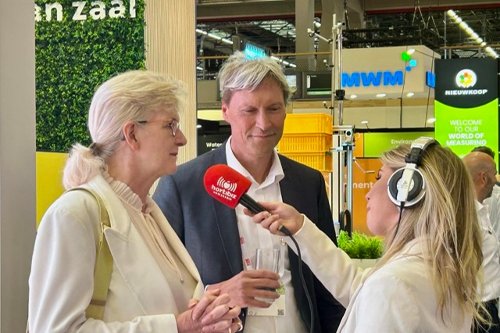Starting IPM at propagation makes perfect sense
Added on 23 December 2024

Producing various types of agricultural product, Spayka began trading fresh fruits and vegetables to CIS and Europe countries in 2007. It is now responsible for 70% of the Armenia’s fresh fruit and vegetable exports.
Keen to reduce reliance on conventional chemical crop protection products, in 2020 Spayka collaborated with Biobest, and local distributor Agro Master, on an initial IPM trial on 20ha. It proved so successful that within a year the company had embraced IPM on both its high-tech sites, totalling 115ha, near the capital Yerevan.
“In the Middle East, with no local dedicated plant propagators, larger operations tend to produce their young plants in-house,” says Pascal Briand, Biobest IPM and Pollination Specialist. “The transplants benefit from the very short distance they travel, while the in-house team has complete control over the production process and, importantly, can start IPM programmes earlier.
“This is helpful as pest pressure is high. The Yerevan climate fluctuates from cold winters to hot summers - with temperatures regularly exceeding 40°C. The tomato, cucumber, pepper and aubergine crops come under attack from a broad range of pest species.
“The key to achieving good control is to establish IPM programmes as early as possible, before the pests appear,” says Pascal. “Starting the strategy at the crop outset saves time and means an army of predators can be established on the young plants preventatively, before pests arrive.”
Timing is everything
With Tuta absoluta and whitefly pressure high in the tomato crop, Macrolophus-System is central to Spayka’s IPM control strategy.
“This generalist mirid bug can take a while to establish,” explains Pascal. “Timing is everything. To get ahead of the pests, the strategy focusses on introducing Macrolophus-System at propagation, with the aim of getting a new predator generation to emerge one week after transplanting, and not before. Too soon and these highly mobile predators are likely to be lost when moving the young plants to the main glasshouses.
“The key is to introduce Macrolophus 7-10 days before transplanting and to implement a weekly supplementary feeding programme with Nutrimac-Plus™. Protein-rich Nutrimac-Plus™ contains Ephestia eggs, helping to optimise predator egg laying.
“The strategy is working very well – we are getting a good population of Macrolophus in the tomato crops from spring.”
Start thrips control early
In the aubergine and cucumber crops, thrips pressure is particularly high mid-season. The
Spayka propagation team starts the IPM programme with Amblyseius cucumeris.
“A loose format product, Amblyseius-System is broadcast over the young plants,” explains Pascal. “As they are closely spaced, it’s easier to achieve an even spread of predators. When transplanted, the tiny predatory mites are already well distributed throughout the crop, ready to seek out prey.
“We work closely with Spayka’s production team to select the most IPM-compatible sprays as back-up. If possible, we choose biopesticides that work well with beneficials.”
Growing trend in Europe
“European growers generally buy in young plants from commercial propagators - relinquishing some control,” says Pascal. “However, progressive growers are increasingly collaborating with propagators to minimise the use of IPM-incompatible sprays, and to develop strategies starting IPM programmes early.
“It makes sense to apply some products when young plants are closely spaced. Application is easier and therefore tends to be better, leading to improved outcomes.
“In cucumbers, for example, the biofungicide ASPERELLO® T34 Biocontrol® is widely used to protect plants from soilborne disease, such as Pythium – ultimately promoting healthy root and plant growth. Another example is NemaFence® Felti, containing beneficial nematodes that are suspended in water and applied to control pests including thrips and sciarid larvae.
“In some European countries, such as in France, the pest pressure is particularly high in the second and third cucumber crops of the season. By introducing Swirskii-System and supplementary feeding, propagators can help build up a standing army on the young plants, which is particularly beneficial when there is no clean break between crops.”
Improved scouting / monitoring
While closely spaced young plants offer advantages when it comes to spraying and broadcasting predators, pest scouting and monitoring becomes more challenging.
“We are seeing growing interest from propagators for our Trap-Eye™ pest monitoring system,” says Pascal. “Fast and accurate, this solar powered system automatically takes pictures of yellow sticky traps to standardise, identify and count flying insects.
“Saving time and labour, Trap-Eye™ improves pest identification and count accuracy, and can also be used to monitor mirid bugs - Macrolophus and Nesidiocoris. A high-tech tool, it can generate a full overview of the propagation greenhouse, showing pest heat maps and graphs of insect trends. Enabling propagators to target control programme accordingly, Trap-Eye™ is ultimately helping to get young plants and IPM programmes off to the best start.”
For more information, contact your Biobest advisor
More news















